#Tadahito Mochinaga
Text
#tadahito mochinaga#animation#videocraft international#rankin/bass#rudolph the red-nosed reindeer#christmas#japan#history
13 notes
·
View notes
Text
#tadahito mochinaga#rankin bass#studio m.o.m.#m.o.m. studios#rankin/bass the new adventures of pinocchio 1960
0 notes
Text
There are a lot of crazy connections in animation, and here are some of my favorites.
Rudolph the Red-Nosed Reindeer and The Last Unicorn were both produced by Rankin-Bass, and it’s honestly kind of funny considering that when you watch them both back to back.
However, TLU was animated by Topcraft, which was a Japanese studio that later animated Nausicaa of the Valley of the Wind before evolving into Studio Ghibli. So that means there’s a direct link between Rudolph and Princess Mononoke.
Plus, some of RB’s stop-motion animators also worked on a film from 1979 called Nutcracker Fantasy, including Tadahito Mochinaga, the animation director on most of the sixties stuff like Rudolph. It has a very similar style to the stop-motion RB specials, but was actually produced by Sanrio. So there’s also a direct link from Rudolph to Aggretsuko.
Romeo Muller wrote the majority of the Rankin-Bass stuff, but he also did work for Fred Wolf Films, including writing all three Puff the Magic Dragon specials. And Fred Wolf Films also provided the animation for The Mouse and His Child, another Sanrio film.
Oh, and both Rankin-Bass AND Sanrio have a direct link to Osamu Tezuka as well. Like, you probably already know Sanrio produced both Unico films, which were adaptations of Tezuka’s work. But Mushi Productions, the same studio that animated a lot of Tezuka shows like Astro Boy and Kimba the White Lion, animated Frosty the Snowman for Rankin-Bass!
Speaking of Unico, both films were animated by Madhouse, which later made a lot of really edgy and mature anime like Ninja Scroll, Perfect Blue, Death Note, and Black Lagoon.
Before starting up Mushi Productions, Tezuka briefly worked for Toei Animation. Toei is a studio you know best for stuff like Dragon Ball, Sailor Moon, and One Piece, but they also did some outsourced work for some American studios back in the day, including some work for Rankin-Bass (again!), and the eighties My Little Pony series. Oh, and Hayao Miyazaki and Isao Takahata did work there early on, so there’s another Ghibli connection.
Speaking of My Little Pony, the G1 series (along with other Hasbro cartoons like Transformers and G.I. Joe) was produced by Marvel Productions, which was actually directly spun off from DePatie-Freleng Enterprises, the studio that produced both the Pink Panther cartoons and most of the seventies Dr. Seuss specials like The Cat in the Hat and The Lorax. If DePatie-Freleng’s name sounds familiar, that’s because one of the founders was famed Looney Tunes director Friz Freleng. So I guess MLP has a connection to both Dr. Seuss AND Looney Tunes.
I could go on and on, and maybe I will in an eventual reblog, but I think you get the point by now.
#rankin-bass#topcraft#studio ghibli#sanrio#fred wolf films#osamu tezuka#madhouse#mushi production#toei animation#hasbro#marvel productions#depatie-freleng enterprises
28 notes
·
View notes
Photo

Mad Monster Party? (1967)
You may not be aware of who Rankin/Bass are, but if you have seen a Christmas television special in the last half-century, chances are you have seen one of their works. In an increasingly fragmented popular culture, those Christmas specials remain touchstones. Among those specials from animation director-producers Arthur Rankin Jr. and Jules Bass are Rudolph the Red-Nosed Reindeer (1964), Frosty the Snowman (1969), Santa Claus is Comin’ to Town (1970), The Year Without a Santa Claus (1974). Primarily known for their stop-motion animation television specials, Rankin/Bass also made theatrical films at the height of their popularity. Their third feature film, despite not being released in mind for Halloween, extended the studio’s stop-motion wizardry for the first time to all things spine-tingling and spooky.
Distributed by Embassy Pictures, Mad Monster Party? is a bizarre comedy that will delight the youngest set (frankly, I have never encountered a Rankin/Bass production that wasn’t bizarre), perhaps introducing some of them to the most famous monsters in film and literature. For Rankin/Bass’ older fans (or those not acquainted with their work), this film is one of their most ambitious projects; but it is underseen, rarely televised or programmed by independent movie theaters.
Residing in a castle on the Isle of Evil is Baron Boris von Frankenstein (voiced by Boris Karloff in his final Frankenstein-related work), who also cohabits the castle with his Monster (Alan Swift, who voices all other non-female characters in the film), the Monster’s more intelligent mate (Phyllis Diller), assistant Francesca (Gale Garnett; whose character might be the most buxom Rankin/Bass character ever), and the head zombie butler Yetch (who looks and, thanks to Swift, sounds like Peter Lorre). Baron Frankenstein has just successfully concocted a formula that can destroy any matter and, as the head of the Worldwide Organization of Monsters, wishes to announce his discovery and his retirement from the organization. A who’s who of monsters receive summons: Count Dracula, the Mummy, The Hunchback of Notre Dame, the Werewolf, the Invisible Man, Dr. Jekyll/Mr. Hyde, and “The Creature” (the Creature from the Black Lagoon). Francesca notices there is one name on the list who is not a member of the organization – a pharmacist named Felix Flanken (Swift impersonating James Stewart). There has been no mistake, assures the Baron, because Felix is his intended successor. Francesca, who wanted the Baron’s position, is upset and plots to disrupt the succession. But when Felix arrives late to the mad monster party, Francesca is surprised to find that the heir apparent is inept, asthmatic, astigmatic.
Due to the filmmakers not wishing to pay royalties, some of the monsters that appear are called alternate names, even though each one is recognizable. Occasionally, Frankenstein’s monster is referred to as “Fang” (a reference to Phyllis Diller’s comedy acts, as she referred to her husband by this name during those acts); the Bride of Frankenstein becomes “The Monster’s Mate”; the Creature from the Black Lagoon is simply the “Creature”; a well-known monster that will go unnamed here due to spoilers is “It”; et cetera.
The screenplay by Len Korobkin and Harvey Kurtzman (a writer for and the founding editor of Mad magazine) contains plenty of comedic padding. Thus, Mad Monster Party? feels like an hourlong Rankin/Bass special that cannot justify its additional half-hour. Not that I minded too much in this case, despite the redundant character introductions and overlong slapstick scenes. Felix’s cluelessness onboard the ship ferrying the Baron’s guests to the Isle of Evil is situational hilarity. The variety of characters attending Baron Frankenstein’s gathering provides plenty of opportunities for them to interact with each other as a collection of dysfunctional colleagues. Their factionalism and widespread distrust between each other result in scheming and dry one-liners (including double entendres!) that complement the signature surreal humor of Rankin/Bass productions.
In a decade where monsters were having a resurgence in American popular culture (capped off by Scooby-Doo, Where Are You!), the relationships between the monsters in Mad Monster Party? feel influenced by earlier television series like The Addams Family (1964-1966) and The Munsters (1964-1966). Other influences and references will pass over the heads of most under a certain age; behaviors such as slapping a hysterical woman to make her come to her senses is deeply rooted in outdated ‘60s behavioral norms. Mad Monster Party? is funnier if one understands that there are stand-ins for certain actors: Baron Frankenstein resembles and is voiced by Karloff, Felix sounds like and acts like a Jimmy Stewart character from every romantic comedy he starred in, Yetch is obviously Peter Lorre, and the Monster’s Mate looks like and acts like Phyllis Diller. The band that plays at Baron Frankenstein’s dinner party seems to be a parody of the Rolling Stones. Though these decisions may need explaining to younger viewers and draw out the film’s runtime, the film’s comedy is just as weird as anything Rudolph the Red-Nosed Reindeer offers. This is especially true in the final third of the film, defined by an out-of-left-field romance and an uninvited guest that wreaks havoc. These scenes give Rudolph’s “elf practice”, the reindeer’s interactions with each other, the Woodsman, and the Island of Misfit Toys a run for their money.
For almost all of Rankin/Bass’ television and film productions, the animation was entirely outsourced overseas. Such was the case for Mad Monster Party?. Using Rankin/Bass’ “Animagic” process, the film’s animation was spearheaded in Tokyo by Tadahito Mochinaga (Rudolph the Red-Nosed Reindeer, 1965’s The Daydreamer) of MOM Productions. In tandem with the character designs sketched by Jack Davis (an original artist for Mad magazine), the Japanese animators under Mochinaga meticulously moved the six-to-eight-inch puppets frame-by-frame – building open the advances pioneered by George Pal’s Puppetoons series of short films (1934-1947). The dolls’ realistic motions (or at least as realistic as such motion can be) were accomplished by using live actors standing nearby as reference. Mouth movements during dialogue was expressed using fine Japanese paper pasted for one frame and removed for the next. Each doll cost about $5,000 (just over $40,000 in 2020’s USD) to make and the animation itself was time-consuming.The production design for Mad Monster Party? represents some of the art direction in any stop-motion Rankin/Bass piece – especially the moody, cobweb-filled interior of the Baron’s castle.
youtube
Interspersed across Mad Monster Party? are several songs composed by Maury Laws (1964’s Return to Oz, The Year Without a Santa Claus) and lyrics by Jules Bass. Like almost all songs from Rankin/Bass pieces, the songs are not well-integrated into the story, but it is nevertheless difficult to imagine skipping any of them. The songs – though a vast majority are novelty songs – provide a bolt of energy where dialogue may have been trite. “Do the Mummy” by Little Tibia and the Fibias (reportedly real-life band Dyke and the Blazers) has absolutely zero lyrical interest along with its funk rock keyboard melody – but hey, we get the puppets to dance! “One Step Ahead” is just as repetitive, but arrives with the added benefit of Karloff speak-singing his parts (and who doesn’t want more Boris Karloff?). Phyllis Diller gets a solo number as the Monster’s Mate in “You’re Different” – a number to chastise Frankenstein’s Monster for his “roving eye[s]”.
But there are two songs by Laws and Bass in a different league than the rest. The first is the title song, “Mad Monster Party”, sung by jazz singer Ethel Ennis. On my first viewing of Mad Monster Party?, I never expected an opening tune as badass as this – replete with blaring brass, stabs of percussion, and string flourishes. It sounds like it was composed by John Barry for a James Bond movie; it makes a lyric like, “Did you sell your soul to Mephistopheles?” not feel awkward. “Mad Monster Party” is a snarling, unorthodox accompaniment to the monsters’ initial introductions over the opening credits – and the most pleasant surprise of the film. Almost as brilliant is a song for Francesca, with Gale Garnett singing the ballad “Never Was a Love Like Mine”. If only the context for that song (which I will not reveal to those who haven’t seen the film) was not so peculiar.
Upon viewing the final cut of Mad Monster Party?, executive producer and Embassy Pictures founder Joseph E. Levine expressed his disappointment in the picture and decided to limit the film’s theatrical release. The half-aborted theatrical release destined Mad Monster Party? to Rankin/Bass obscurity, even though it would be carried by select American television stations as a holiday special. The studio would remain focused on Christmas material, but would infrequently dabble in non-Yuletide projects. In 1972, Rankin/Bass directed a cel-animated television movie entitled Mad Mad Mad Monsters. The film is a “prequel of sorts” and includes many of the characters from Mad Monster Party?. To this day, Mad Monster Party? exists in the shadow of the better-known Christmas television specials. It also does not help that, since Rankin/Bass’ ultimate dissolution in 2001, the studio’s theatrical feature films have been separated from the rest of the Rankin/Bass library (pre-1974 specials are owned by Universal; specials from 1974 and after are owned by Warner Bros.). At the time of this review’s publication, Lionsgate holds the rights to Mad Monster Party?.
For a time, Rankin/Bass’ stop-motion animation films and television specials were popular in North America – their projects standing out from an animation industry beholden to cel animation perfected by Disney. Mad Monster Party? is Rankin/Bass craftsmanship (and lunacy) at a feature length, and necessary viewing for students of stop-motion animation. The film plays on the horror archetypes that audiences are now accustomed to, amid some of the most beautifully-designed sets in the studio’s history. It is an ideal Halloween viewing experience, but unfortunately it does not seem it has ever reached the audience that it deserves.
My rating: 6.5/10
^ Based on my personal imdb rating. Half-points are always rounded down. My interpretation of that ratings system can be found in the “Ratings system” page on my blog (as of July 1, 2020, tumblr is not permitting certain posts with links to appear on tag pages, so I cannot provide the URL).
For more of my reviews tagged “My Movie Odyssey”, check out the tag of the same name on my blog.
#Mad Monster Party#Mad Monster Party?#Jules Bass#Arthur Rankin Jr.#Rankin Bass#Tadahito Mochinaga#Boris Karloff#Alan Swift#Phyllis Diller#Ethel Ennis#Gale Garnett#Len Korobkin#Jack Davis#Harvey Kurtzman#Maury Laws#stop motion#TCM#My Movie Odyssey
43 notes
·
View notes
Photo


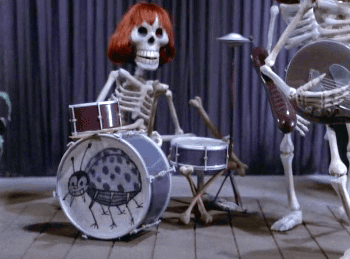
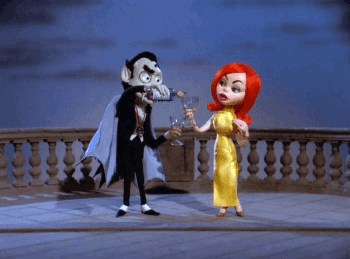

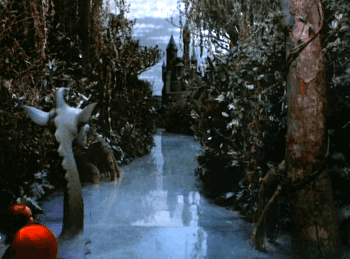
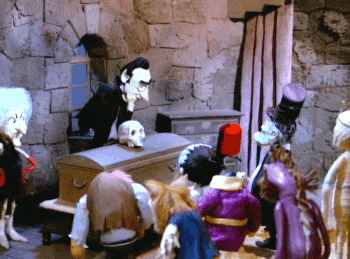
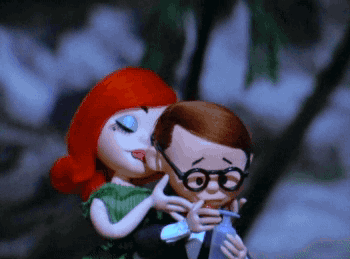
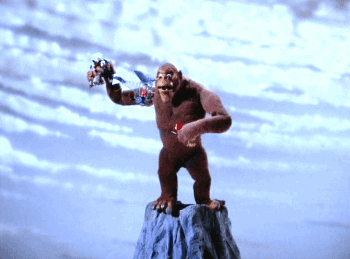

Mad Monster Party?
130 in x of animated feature film history
Release: Mar. 8th, 1967
Country: USA, Japan
Director: Jules Bass
“Baron Boris von Frankenstein achieves his ultimate ambition, the secret of total destruction. He sends out messenger bats to summon all monsters to the Isle of Evil. The Baron intends to inform them of his discovery and also to reveal his imminent retirement as head of the Worldwide Organization of Monsters.
Frankenstein’s plan is to hand the position and his secrets over to his nephew Felix, a young pharmacist with no knowledge of monsters. Frankenstein’s assistant Francesca wants the title for herself, and she plots with Dracula to take out Felix. Over time, Francesca develops feelings for Felix, after he unknowingly saves her multiple times. Dracula, Frankenstein's Monster, and the Monster's Mate descend upon Francesca, who summons “It”––a gigantic gorilla ape reminiscent of King Kong––who captures all the monsters as Francesca and Felix escape.
Unhappy that the monsters had conspired against him, Frankenstein drops his secret formula, destroying the island and everyone on it.
The film was created using Rankin/Bass' Animagic stop motion animation process, supervised by Tadahito Mochinaga of MOM Productions in Tokyo, Japan. Mad Magazine creator Harvey Kurtzman penned the script (with writer Len Korobkin) and Mad artist Jack Davis designed many of the characters.
In addition to the famous monsters seen in the film, Mad Monster Party also features several celebrity likenesses. Boris Karloff and Phyllis Diller's characters are both designed to look like the actors portraying them, while Baron Frankenstein's lackey, Yetch, is a physical and vocal caricature of Peter Lorre.
Mad Monster Party was one of several child-friendly projects Boris Karloff lent his voice to in his final years. It was his final involvement in a production connected to the Frankenstein mythos that had propelled him to stardom some 36 years earlier.”
(source)
FIRST POSTED: 2/21/17
#mad monster party#mad monster party?#animated feature film history#feature film#jules bass#rankin-bass#Rankin/Bass Productions#rankin bass#1967#1960s#animation#usa#stop-motion animation#tadahito mochinaga#harvey kurtzman#len korobkin#jack davis#boris karloff#phyllis diller#peter lorre#frankenstein#dracula#gif#animation history#japan
744 notes
·
View notes
Text
Animation Night 76: Rankin//Bass
When it comes to naming Western animation studios, you’ve got the really old school studios from the early 20th century like Fleischer, Disney and Warner Bros. You’ve got the offshoots of Disney like Don Bluth Productions and Dreamworks. You’ve got the oddball directors like Ralph Bakshi would who hop from studio to studio, whoever would take their pitch. Head over to Europe and you find a lot of smaller studios like Cartoon Saloon, Bobbypills, Xilam or (long list of French studios) who tend to work on massively multinational collabs designed to scoop up arts funding from as many countries as possible. There are limited-animation oriented TV studios, which is to say there is Hanna-Barbera.
And then there’s Rankin/Bass!
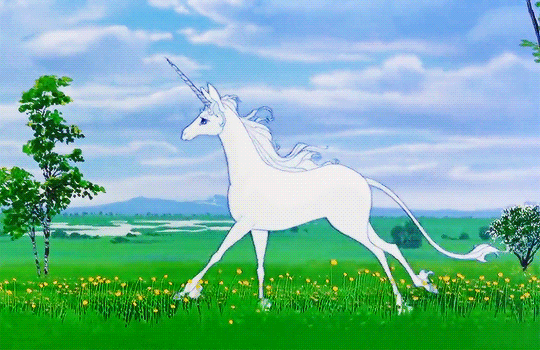
Rankin/Bass are a bit of an odd beast, in that they were perhaps one of the earliest studios to primarily produce animation via international outsourcing - and while nowadays that usually means South Korea and the Philippines, back in 1960 that largely meant Japan.
Rankin/Bass, founded naturally by two guys called Rankin and Bass (in 1960 under the name Videocraft International, based in New York), took American money and sent it to animators at some of the oldest anime studios including Toei, Eiken/TCJ and Mushi Pro to draw or stopmotion animate their films, which they would voice act with American VAs. But the studio they’re most associated with is Topcraft, which you may remember from Animation Night 70 as the studio which old Hayao chose to make Nausicaa; outside of this rare exception, Topcraft almost exclusively served Western productions, largely for Rankin and Bass. And after Topcraft vanished shortly after Nausicaa, with the majority of its animators going on to follow Miyazaki to the exciting new Studio Ghibli, but a certain portion hung on, creating Pacific Animation Corporation. You can see the full list here.
The way things seem to work at this studio, Arthur Rankin and and Jules Bass themselves directed basically all their movies. On the Japanese side, the stop motion ‘animagic’ productions are credited to Tadahito Mochinaga at MOM production; Topcraft was led by Toru Hara, formery of Toei, before he joined the Ghibli exodus.

For the first few decades of the studios existence, Rankin/Bass specialised in, well, ‘holiday specials’ for various US xtian celebrations like Christmas and Thanksgiving. Since the official line of Animation Night is that the only valid one of these is Halloween and all others are revisionist, we are going to pass over these without much comment. Which means we’re speeding forwards to the late 70s, where they started to branch out a little. First were a series of hourlong TV specials, and then, suddenly, childrens’ books were in, starting with Tolkien’s The Hobbit.
Why did this happen at this particular point in history? I’m honestly not sure, although perhaps the success of Zuiyo Eizo’s World Masterpiece Theatre series (also talked about on Night 70) had a lot to do with it? Or perhaps they were hoping to fill the space left by a weak decade at Disney? In any case, in the space of about a decade, Rankin/Bass dived head first into adapting fantasy books - among them Tolkien’s Return of the King, The Last Unicorn by Peter S Beagle (certainly the best remembered), The Flight of Dragons by Peter Dickinson, and a version of The Wind in the Willows by Kenneth Grahame.

The particular visual style of this period of Rankin/Bass movies stands out - if not necessarily always for good reasons, those giant hobbit eyes are certainly a choice! The 70s and early 80s were a period when ‘fantasy’ had not yet ossified into its current rigid commercial aesthetic (i.e. the Star Wars money machine was still revving up), watercolour paintings and fantasy artists were throwing out some fascinating feelers into aesthetic space. At its best this led to some brilliant works like Belladonna of Sadness [Animation Night 69] over in Japan, the rise of French comics artists such as Meobius, and even disjointed but very compelling Bakshi movies like Wizards.
It may contextualise things to note that this song by Leonard Nimoy was made in 1968:
youtube
...which is admittedly a full decade and then some before The Last Unicorn, but that’s the vibe. Imagine a drawing of a hobbit with a pipe on top of a weed shop... oh, you don’t have those outside of Glastonbury? Huh.
So, let’s have a look at a couple of these movies.
The Last Unicorn (1982) is actually the only one I’ve seen, capturing a suitably ethereal and melancholy atmosphere - perhaps not surprising since the book’s author Peter S. Beagle wrote the screenplay as well. Rankin/Bass were the last animation company to be approached, initially horrifying the author, but he came around after seeing the Japanese animators’ character designs (which include a fascinating cloven-hoofed look for the unicorn herself that recalls illuminated manuscripts and medieval tapestries, apparently intentionally!) and the voice actors’ performances. @mogsk reports actually meeting the guy at a screening of a remastered version with additional inbetweens, and he was very happy about the adaptation, only regretting that they hadn’t had the budget for more full animation in the first place.
It was rly cool, we were sitting in the second row to the front, and the guy in front of us kept turning around and excitedly talking about each scene, and when the lights came up at the end t hey handed him a mic and he was like ,"So yeah I'm peter s beagle!" lol
A lot of the tone has to do with the score, composed by Jimmy Webb with the band America and singer Lucy Mitchell. A reviewer is quoted as calling it “an appropriately somber and sentimental blend of fairy tale motifs and dark, Wagnerian cues” and disparaging the folk ballads which became so common in other rankin/bass films, but honestly these ballads now convey a feeling of ‘hey it’s (only just ceased to be) the 70s’ and it really works here. At least I think the OP is pretty :p
So yeah that’s who’s on it, but what’s it about? It’s a tragic little story about a unicorn who goes looking for any other survivors of the magical creature genocide by a tyrannical monster known as the Red Bull, falls into various misadventures including a traveling circus, and it gets very bleak indeed when she has to turn human to evade capture.
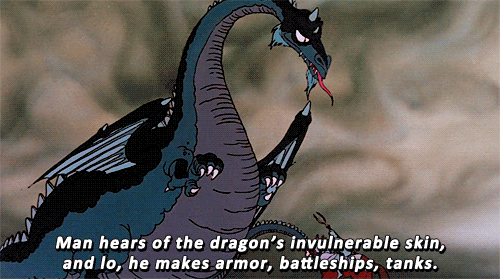
As for our second movie... one of the Tolkiens might be an obvious pick, but instead, I’m going to take the opportunity to show @mogsk the one R/B fantasy film she hasn’t seen... and nor have I so this one’s a roll of the dice. That is The Flight of Dragons by Peter Dickinson, If you look at the poster you might be like, “hey bryn have you gone mad” (you fools I was mad all along), but the film itself looks like... well, a late 70s fantasy film, so high drawing counts, some rotoscopy looking scenes, often kinda-stiff animation but also some beautiful 70s-anime approaches to stuff like fire.
This one... the plot’s pretty daft, a buncha wizards get together and have an argument about the fate of humanity. Forbidden to fight among themselves, the 'good’ wizards deputise a small group of humans to steal the bad wizard’s crown. Meanwhile a young Peter Dickinson - author of the book, self-inserting here! - gets isekaied into the past and accidentally downloaded into a dragon’s body. From there we get a kind of science vs magic subtheme which honestly sounds a little painful, as Peter attempts to fit dragons into his 20th-century ontology, but we shall see...
And oh! Guess this is actually our first isekai on here. Wasn’t expecting that. I shall save an attempt to research the history of isekai for when we end up doing an actual anime one.
Anyway, it looks like it will have some fun vocal performances and cool visuals, so hopefully a chill and amusing time, and it still has something of the colouring of 70s/early 80s anime which should give some visual appeal even if it’s not quite the technical showoffiness of something like Horus. Idk, let’s roll the device.
Animation Night 76 will start... now! I know, late again. Hopefully this will be a fun one to recover from any surgeries, illnesses, malaises, and misfortunes you may have experienced in the last week <3 head to twitch.tv/canmom when you are ready!
15 notes
·
View notes
Text
cool things i found about rankin/bass while wikipedia surfing
Jules Bass is still alive (age 84)
Shirley Booth took the role of Mrs. Claus in A Year Without A Santa Claus right before retiring to her home in Cape Cod.
The voice of Rudolph is a woman named Billie Mae Richards.
Paul Soles (Hermey,) Corinne Conley (Dolly,) Alfie Scopp (Fireball & Charlie-In-A-Box) and Carl Banas (Head Elf) are the only remaining voice actors in the original Rudolph that are still alive.
Alfie Scopp is 100 years old.
A Year Without A Santa Claus took 2 months to film and edit.
It is a known fact that the Snow Miser & Heat Miser scenes in Year Without A Santa Claus are cinematic art.
Tadahito Mochinaga, the main animator for many Rankin/Bass specials, worked in both Chinese and Japanese animation industries and was considered a pioneer in Japanese stop-motion.
The “Animagic” was filmed at MOM productions in Tokyo. their traditional animation was first made at Crawley Films in Canada, but then were done by Toei Animation and Mushi Productions. Toei Animation animated Sailor Moon and One Piece, along with countless other anime & TV specials.
Cel animation was used for the falling snow.
Rankin/Bass specials are now half-owned by Warner Brothers and Dreamworks Animation.
2 notes
·
View notes
Photo





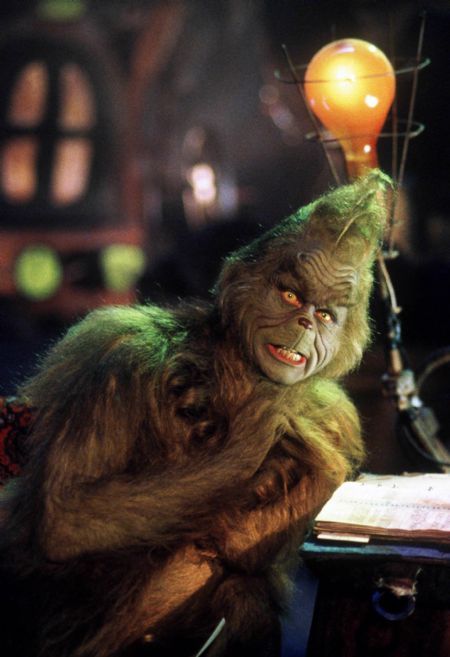
BIGFOOT JOINS THE RANKS OF AMERICAN CHRISTMAS ICONS
When did Bigfoot become a Christmas icon? I’m sure that question sounds strange to most of you, but I can’t be the only one to have noticed Sasquatch’s gradual induction into the pantheon of modern American Christmas characters. Right now you can buy Bigfoot Christmas tree ornaments, sweaters and stockings online, while a retailer as mainstream as Wal-Mart currently has a pair of yuletide Yeti shirts for sale in stores. If you need more proof just pull up Netflix and check out the new film Pottersville (2017, Dir. Seth Henrikson); an indy Christmas comedy with some major league talent including Michael Shannon (The Shape of Water), Judy Greer (Jurassic World), Ron Perlman (Pacific Rim) and Ian McShane (American Gods) – the latter doing his best impression of Robert Shaw’s character from Jaws (1975, Dir. Steven Spielberg). The film revolves around the small town of Pottersville – from the Christmas classic It’s A Wonderful Life (1946, Dir. Frank Capra) – which has fallen on hard times economically. The residents gets an unexpected Christmas gift however in the form of a series of Bigfoot sightings which instantly transforms their forgotten hamlet into a must-visit tourist attraction!
Naturally, some people will scoff at the idea of Bigfoot becoming a part of the American Christmas holiday, but personally I’m all for it. I’m a big fan of Christmas monsters, ghosts and goblins – all of which were a part of the season long before Frosty the Snowman and Elf on the Shelf came along and something which I spoke about at length with John W. Morehead of Theofantastique last year. But still, the question persists, when exactly did Bigfoot get in on the holiday scene – or has he always been here?
When looking for Bigfoot’s entry point into the Christmas season the most obvious starting place is Rankin/Bass Productions’ 1964 holiday classic Rudolph the Red-Nosed Reindeer (Dir. Larry Roemer & Kizo Nagashima) featuring stop-motion by underappreciated Japanese animator Tadahito Mochinaga. As anyone who has experienced this timeless piece of Christmas Americana knows, Rudolph and his friends spend much of the movie being menaced by a giant Yeti referred to by the various characters as either the Abominable Snow Monster of the North or just the Bumble for short. Perhaps the only true Christmas kaijū, scholar Jason Barr sees the Bumble as one of the many thematic descendants of King Kong, which corroborates author David Coleman’s observation, as found in his encyclopedic The Bigfoot Filmography (2011), that no single film has had more impact on the pop-culture perception of Bigfoot and the Yeti then King Kong (1933, Dir. Merian C. Cooper & Ernest B. Schoedsack).
Of course, King Kong is a work of paleo-fiction, specifically the ‘Lost World’ sub-genre and as a result retains elements of the colonialist worldview which gave rise to the literary and cinematic tradition of stories concerning white explorers traveling to distant exotic lands where – unlike back home – “time stands still” and primitive beasts and people exist in Eden-like bliss; or at least until our intrepid adventures decide it’s their god given right to run roughshod over the place killing and/or capturing the animals and conquering the indigenous inhabitants.
As Barr writes in his book The Kaijū Film (2016), Rudolph’s Bumble is no exception to this tradition as we see the fearsome Snowman “is not only outwitted by the gathered cast” but also reduced to literal “toothless subservience” and subsequently put “to work decorating Christmas trees” in Santa’s workshop. Truly a sad fate for any once ferocious Christmas monster.
But in more recent years the Bumble’s kith and kin appear to be getting their revenge!
This leads us to our second possible point of origin for the modern Christmas Bigfoot; researcher Phyllis Siefker’s 1997 tome Santa Claus, Last of the Wild Men. Here Siefker challenges the conventional notion that America’s Santa Claus is merely a modified version of Europe’s St. Nicholas. After all, asks Siefker, why would Protestant immigrants to the New World bring with them the tradition of an extremely popular Catholic saint? As an alternative explanation Siefker proposes that Santa – with his great beard, furry coat, and habit of nocturnal prowling – is really based upon the ancient pre-Christian figure of the Wildman as outlined in such excellent scholarly works as Richard Bernheimer’s Wild Men in the Middle Ages (1952) and Roger Bartra’s Wild Men in the Looking Glass: The Mythic Origins of the European Otherness (1994).
The idea that Santa isn’t actually a “right jolly old elf” and instead a hairy, savage Bigfoot-like monster must have been at least part of Finnish filmmaker Jalmari Helander’s inspiration for his fantastically bizarre 2010 film Rare Exports: A Christmas Tale in which plucky child protagonist Pietari discovers that “the Coca- Cola Santa is just a hoax” while the actual Kris Kringle is a Kong-sized goat-horned monster who “tears naughty kids to pieces” until “not even their skeletons are left.” Unfortunately for Pietari and his friends, a rich oil tycoon from America – possibly inspired by real-life American oil tycoon Tom Slick (d. 1962) who spent much of his fortune hunting for Bigfoot and the Yeti – has come to unseal the tomb buried beneath the Korvatunturi mountain range where the Saami people imprisoned Santa long ago.
Of course for cryptozoologists like Loren Coleman who entertain the possibility that there might be some truth behind such worldwide Wildman tales, Siefker’s work represents more than just a radical rewriting of Christmastime folklore, but rather the tantalizing – though unlikely - possibility that a character as iconic and beloved as Santa Claus may have been inspired by a relic population of anomalous-primates!
More recently a different kind of yuletide Wildman has been making his presence known here in the US. This, of course, is the Krampus; a kind of shaggy demon with curled goat horns, a lolling red tongue and a talent for punishing naughty children with switches and chains. As outlined in Al Ridenour’s excellent The Krampus and the Old, Dark Christmas (2016), Krampus hails from Austria where in small remote mountains towns such as Bad Gastein and Öblarn the day preceding the Catholic Church’s feast in honor of St. Nicolas sees the celebration of Krampusnacht (“Krampus Night”) in which children of all ages anticipate a visit from St. Nicholas and his posse of Krampus. These house visits are enacted by local Krampuspass (“Krampus Troupes”) composed of men ranging in age from their late teens to early forties who prepare all-year by sewing heavy wool suits made from sheep and goat’s hair and carving handcrafted wooden masks – called klaubaufkopfe (“Krampus heads”) – which along with chains, bells, switches and baskets will be worn by the performers as they accompany St. Nick – typically played by the tallest member of a troupe – throughout the town to distribute rewards and punishments. In addition to these house visits many towns also feature a Krampusumzüge (“Krampus-Run”) in which dozens of individuals dressed as the Krampus run through the streets threatening and menacing children as well as occasionally smacking a pretty young girl on the rear with their switches all while consuming copious amounts of alcohol. All of this makes for a festival that is equal parts Christmas, Halloween and Mardi Gras.
Since the early 2000s Krampus has begun an unassailable assent through mainstream American pop-culture gradually, and now undeniably, situating himself among other time honored holiday icons. According to reporter Christopher Bickel as of 2014 there are annual Krampus runs, bar crawls, parties and other related events being help in over thirty US cities nationwide while Krampus’ likeness can be found on a huge number of products including Christmas sweaters, stockings, ornaments, playing cards, plush and vinyl toys, decorative figurines, t-shirts, books, comics and in cartoons ranging from Scooby-Doo to American Dad. In 2015 Hollywood unleashed two theatrical Krampus flicks with the William Shatner staring anthology A Christmas Horror Story (Dir. Grant Harvey, Steven Hoban & Brett Sullivan) and Legendary/Universal Pictures’ Krampus (Dir. Michael Dougherty). There’s even a company selling an 11-foot-tall animatronic toddler swinging Krampus which you can put in your front yard!
Krampus may also have played a part in inspiring another popular 20th-Century American Christmas monster: The Grinch. As artist Jeffrey Vallance – who via several essays has picked up the torch lit by Phyllis Siefker and continued exploring the possibility of Santa’s Wildman roots – has observed: “Over the ages, the brutal Wildman figure evolved into a character more like a clown or holiday fool. How the Grinch Stole Christmas by Dr. Seuss follows a classic Wildman scenario: The Grinch is a hairy, Bigfoot-like creature that lives in an alpine cave in a mountain similar to the Matterhorn.”
While Theodor Geisel – aka Dr. Seuss – maintained that The Grinch was primarily an autobiographical character, considering the beloved children’s author’s German ancestry one cannot help but wonder if yuletide Wildman characters like Krampus didn’t also play some part in the formation of the beloved holiday humbug.
Back in November I delivered a presentation at the American Academy of Religions in Boston on the Krampus in which I argued that American’s recent infatuation with the Krampus – and other Christmas monsters, including apparently now Bigfoot – can best be understood as an oppositional response to conservative’s alleged “War on Christmas,” a moment perhaps best embodied by comedian Stephen Colbert’s 2009 declaration that Americans “need to bring Krampus to America to fight the War on Christmas.” While it seems clear that many Americans who desired a more interfaith approach to the season did not initially see themselves as engaged in a “War” the continual insistence by certain factions – and Fox News host Bill O’Reilly in particular – that there was indeed one eventually drove those opposed to a totalitarian Protestant interpretation of the holiday to fight back and call in the cavalry in the form of a monstrous menagerie of older darker Christmas creations. As scholar Joseph P. Laycock has observed monsters are often underappreciated sources of religious meaning, a set of symbols and rituals which can be used to inspire awe in the beholder, be it participating in a Krampusumzüge or catching a brief glimpse of Bigfoot.
#christmas#king kong#krampus#grinch#rare exports#bigfoot#yeti#rudolph the red nosed reindeer#bumble#sasquatch#santa claus#wildman#cryptozoology#pottersville
13 notes
·
View notes
Video
youtube
Huh. I never knew Sanrio delved into stop-motion animation before. I thought it was some Rankin Bass film I haven’t heard of at first. But it was animated by , Tadahito Mochinaga’s studio, who animated all the stop-motion Rankin Bass specials, so in a way I was partially right.
12 notes
·
View notes
Text
Anime
Japanese animation began in the early 20th century, when Japanese filmmakers experimented with the animation techniques also pioneered in France, Germany, the United States and Russia. A claim for the earliest Japanese animation is Katsudō Shashin, an undated and private work by an unknown creator. In 1917, the first professional and publicly displayed works began to appear. Animators such as Ōten Shimokawa and Seitarou Kitayama produced numerous works, with the oldest surviving film being Kouchi's Namakura Gatana, a two-minute clip of a samurai trying to test a new sword on his target only to suffer defeat. The 1923 Great Kantō earthquake resulted in widespread destruction to Japan's infrastructure and the destruction of Shimokawa's warehouse, destroying most of these early works.
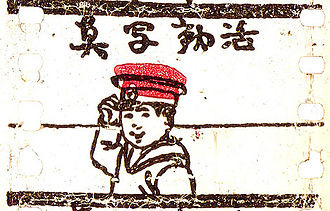
The success of The Walt Disney Company's 1937 feature film Snow White and the Seven Dwarfs profoundly influenced many Japanese animators. In the 1960s, manga artist and animator Osamu Tezuka adapted and simplified many Disney animation techniques to reduce costs and to limit the number of frames in productions. He intended this as a temporary measure to allow him to produce material on a tight schedule with inexperienced animation staff. Three Tales, aired in 1960, was the first anime shown on television. The first anime television series was Otogi Manga Calendar, aired from 1961 to 1964.
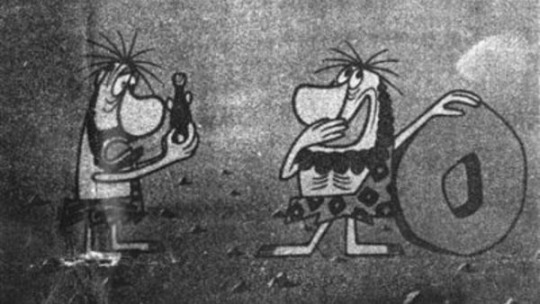
Anime follows the typical production of animation, including storyboarding, voice acting, character design, and cel production (Shirobako, itself a series, highlights many of the aspects involved in anime production). Since the 1990s, animators have increasingly used computer animation to improve the efficiency of the production process. Artists like Noburō Ōfuji pioneered the earliest anime works, which were experimental and consisted of images drawn on blackboards, stop motion animation of paper cutouts, and silhouette animation. Cel animation grew in popularity until it came to dominate the medium. In the 21st century, the use of other animation techniques is mostly limited to independent short films, including the stop motion puppet animation work produced by Tadahito Mochinaga, Kihachirō Kawamoto and Tomoyasu Murata. Computers were integrated into the animation process in the 1990s, with works such as Ghost in the Shell and Princess Mononoke mixing cel animation with computer-generated images. Fuji Film, a major cel production company, announced it would stop cel production, producing an industry panic to procure cel imports and hastening the switch to digital processes.

Body proportions of human anime characters tend to accurately reflect the proportions of the human body in reality. The height of the head is considered by the artist as the base unit of proportion. Head heights can vary, but most anime characters are about seven to eight heads tall. Anime artists occasionally make deliberate modifications to body proportions to produce super deformed characters that feature a disproportionately small body compared to the head; many super deformed characters are two to four heads tall. Some anime works like Crayon Shin-chan completely disregard these proportions, in such a way that they resemble caricatured Western cartoons. A common anime character design convention is exaggerated eye size. The animation of characters with large eyes in anime can be traced back to Osamu Tezuka, who was deeply influenced by such early animation characters as Betty Boop, who was drawn with disproportionately large eyes.
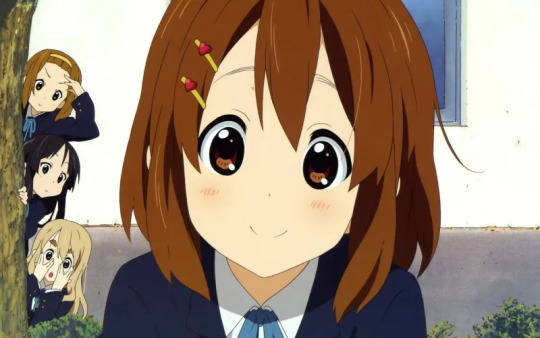
0 notes
Video
vimeo
The Thief And The Hat from Xinxin Liu on Vimeo.
Synopsis:
Three thieves are trying to get hat back from the moon,but...
Credit:
Director/Script/Animation/Edit: Xinxin Liu
Sound Effects/Music Recording Engineer: Hang Ji
Music: Mr.Magorium's Wonder Emporium OST
Production:China Academy of Art
Awards
12th Animation School Of Beijing Film Academy,Tadahito Mochinaga Award
Shinjuku Art Competition,Honorable Mention Prize
Screening
Bucheon International Animation Festival,Bucheon,Korea
“PANAMANIM” International Animation Film Festival, Paris, France
Xi’an International Animation Festival, Xi’an, China
China International Student Animation Festival,Beijing,China
Xiamen International Animation Festival,Xiamen,China
Zhejiang Art Museum,Hangzhou,China
0 notes
Text
#it “King kong” from mad monster party and a dragon from The New Adventures of pinocchio are in this#tadahito mochinaga#princess comet#1970's#japanese television#rankin/bass historian#rick goldschmidt#also on the umbrella entertainment blu ray of mad monster party as an easter egg#old blog post#stop motion anime#animagic#princess comet 1960's 1970's japanese tv drama series
0 notes
Photo

The Daydreamer (1966)
By the 1960s, Christmas television specials were in vogue in the United States. Yet this recent phenomenon had yet to yield a true cultural touchstone. On December 6, 1964, the first Christmas special mainstay aired on NBC. Produced by a fledgling animation studio, Rudolph the Red-Nosed Reindeer put Rankin/Bass, named after co-founders Arthur Rankin, Jr. and Jules Bass, into the public consciousness. Rankin/Bass’ brand of stop-motion animation (“Animagic”) was mostly outsourced to Japanese studio MOM Productions in Tokyo, under the direction of Tadahito Mochinaga. With the windfall of Rudolph, Rankin/Bass and MOM Productions delved into the realm of feature theatrical films. This review concerns their second feature film, The Daydreamer – a stop motion animation/live-action hybrid based on Hans Christian Andersen’s stories. The Daydreamer has starpower in its cast that no Rankin/Bass production had yet matched. But as one might expect from a Rankin/Bass film, there are narrative flaws abound. The Daydreamer, episodic in nature and alternating between live-action and animation scenes, suffers due to the inconsistent quality of the handful of Hans Christian Andersen adaptations it has and the kitschy live-action acting.
The young Hans Christian Andersen (“Chris”; Paul O’Keefe) is the son of a cobbler (Jack Gilford). Papa Andersen often has to face the verbal tirades of frequent customer Mrs. Klopplebobbler (Margaret Hamilton; it is difficult not to think of Hamilton’s portrayal of the Wicked Witch here). His struggling business often means he cannot pay the gangling Pie Man (Ray Bolger; yet another Wizard of Oz star). To take him away from these troubles, Chris will let his imagine run wild while napping. If he can only just find the mythical Garden of Paradise, all these troubles might vanish. One evening, the Sandman (voiced by Cyril Ritchard) promises him to guide him there. Along the way, Chris is subject to dreams that may seem familiar to the viewer. These dreams shift away from live-action into the signature Rankin/Bass animation – adapting “The Little Mermaid”, “The Emperor’s New Clothes”*, “Thumbelina”, and “The Garden of Paradise”. Elements of “The Ugly Duckling” and “Little Claus and Big Claus” also appear.
Among the many voice actors during these animation sequences are Hayley Mills (The Little Mermaid); Burl Ives (Neptune – I have never heard Ives’ voice so devoid of jaunt before); Tallulah Bankhead (the sea witch); Terry-Thomas (the first tailor); Victor Borge (the second tailor); Ed Wynn (the Emperor); Patty Duke (Thumbelina); and Boris Karloff (the Rat).
The film’s adaptations of Andersen’s tales differ in that Andersen himself becomes a character in each of the stories. The Daydreamer approaches the stories as if the ideas are only just forming in the young Chris’ head, to be written and published when he is an adult. Within these dreams-someday-to-be-stories, Chris is largely a passive character. He takes instruction from the central figures of his future tales, never really asserting himself or asking basic questions about the misadventures he goes through. Chris acts as if lost in his own imagination – which fits the conceit of the film. So when he awakens into the real world, the film’s pacing slams the brakes. In the real world, everyone except Chris is a caricature, somehow less realistic than the individuals appearing in the daydreams. The transitions between animation and live-action will take the viewer out of the film because of the unceasing manic acting in the latter, as opposed to the charming puppetry of the former. As such, The Daydreamer’s weaknesses lie almost entirely with the live-action scenes – too consciously playing to the audience and over-the-top in their absurdity.
In an era of American animation defined by Disney on the screen and Hanna-Barbera on television, Rankin/Bass carves out its own niche in how it tells its stories. The meta humor and fourth wall breaking of Hanna-Barbera’s works (a legacy of the duo’s work at MGM) makes no appearances here. Disney’s clean-cut fairytale endings also do not apply. The Daydreamer’s adaptation of “The Little Mermaid” does not have the gruesome premise as Andersen’s original fairytale, but it retains the ending’s heartbreak. There appears to be no alterations to “The Emperor’s New Clothes” – which includes Chris, but he just feels superfluous to the plot and to the tale’s keen comedy. Each of the film’s segments bring Chris closer to the final animated sequence, “The Garden of Paradise”. The adaptation of that tale sanitizes its deathly overtures for a devil-like creature, but keeps the ambiguous, open-ended conclusion. By maintaining the original conclusion, “The Garden of Paradise” is a curious coda for The Daydreamer – a film that ends as abruptly as its several transitions, like a daydream.
The Daydreamer’s live-action sets benefit, however, due to the fact many of its scenes were shot at the 1964 New York World’s Fair. The World’s Fair pavilions used in this film mimic a feel of small-town, nineteenth century Europe more realistically than a Hollywood soundstage might. The production design for the animated dream sequences, too, are mesmerizing. Perhaps this is best exemplified in “The Little Mermaid”. There, the special effects work make it appear as if the whole sequence was shot underwater, rather than a room that contained blue lights streaming into Neptune’s palace. Where are the strings and wires suspending the puppets in mid-air while they “swim”? To the animators’ credit, there are none to be found. Neptune’s palace is one of the grander sets constructed for a Rankin/Bass production; its imposing walls and generous empty spaces reflect a sense of regal grandeur. That royal otherworldliness does not extend to “The Emperor’s New Clothes”, but many of the same production design decisions carry over. Rankin/Bass and MOM Productions are obviously working with more money and manpower for these animated scenes than in the likes of Rudolph or their many holiday television specials. The sense of scale and grandiosity seen here in The Daydreamer and Mad Monster Party? (1967) would rarely, if ever, be replicated for television. And it is also obvious that the filmmakers put the money into the animation and for paying headline-worthy actors, rather than for any writers able to string the animated and live-action halves together.
Seven songs comprise The Daydreamer’s musical soundtrack. Composed by Maury Laws and Jules Bass, most of the songs are forgettable once your viewing is done (including Robert Goulet singing the title song over the opening credits, despite the fact I admire Goulet’s voice). But there are notable exceptions. Sung by Hayley Mills at the end of “The Little Mermaid”, “Wishes and Teardrops” brings the segment to a worthy close. Her loved ignored, the Little Mermaid sings this lament – backed with percussion straight from a ‘60s love ballad and timeless swelling strings – for herself:
Wishes and teardrops
Won’t make him love me.
He’s gone and he’ll never return.
Does he know how teardrops can burn,
When they fall for a wish
That can never come true?
In the film’s final third, “Luck to Sell” injects a jolt of energy sorely missing from many of the other live-action scenes. The song itself is simple and the singing just avoids being flat, but when paired with the energetic choreography from Paul O’Keefe and company, it elevates itself from the rest of the soundtrack (save “Wishes and Teardrops”).
Not often will a viewer encounter a film with two sets of opening credits. I’m not writing about films that have an overture that transition to opening credits (an entirely different approach that modern filmmakers should utilize more), but two sets of opening credits that list the names of the actors involved. For the first set of credits, caricaturist Al Hirschfeld (uncredited) was hired to draw caricatures of the various actors and actresses appearing in, or lending their voices to, The Daydreamer. The Daydreamer is the second of three films that Hirschfeld was involved in. The first, appearing as himself uncredited, was in Main Street to Broadway (1953); his third and final film was as an artistic consultant on the “Rhapsody in Blue” segment (which was influenced by his caricatures) in Fantasia 2000.
Rankin/Bass’ ventures into feature film animation peaked several months later with Mad Monster Party? After that and the unfortunate production of The Wacky World of Mother Goose (1967; a traditionally animated eyesore), Rankin/Bass almost completely dedicated itself to its animated television specials. The Daydreamer, distributed by the now-defunct Embassy Pictures and currently owned by Sony Pictures Television (the ownership of the rights to Rankin/Bass’ features are exasperatingly scattered), has not been widely seen when compared to Mad Monster Party?, let alone Rankin/Bass’ television specials. If one can find a serviceable print of The Daydreamer, the viewing experience will be a valuable glimpse into the studio’s collaboration with MOM Productions. A Rankin/Bass fan that has only known the studio through its television specials will see their work operating with higher production values; Rankin/Bass novices can experience a dimension of animated filmmaking too often considered an afterthought.
My rating: 6/10
^ Based on my personal imdb rating. Half-points are always rounded down. My interpretation of that ratings system can be found in the “Ratings system” page on my blog (as of July 1, 2020, tumblr is not permitting certain posts with links to appear on tag pages, so I cannot provide the URL).
For more of my reviews tagged “My Movie Odyssey”, check out the tag of the same name on my blog.
* “The Emperor’s New Clothes” was adapted twice by Rankin/Bass. The second adaptation is the heart of the television special The Enchanted World of Danny Kaye (1972), starring Danny Kaye. That adaptation of “The Emperor’s New Clothes” is distinct from the one that appears in The Daydreamer. The Danny Kaye special’s adaptation has a more developed storyline, completely different voice cast, and completely different soundtrack.
#The Daydreamer#Rankin Bass#Jules Bass#Arthur Rankin Jr.#Paul O'Keefe#Jack Gilford#Margaret Hamilton#Sessue Hayakawa#Patty Duke#Boris Karloff#Hayley Mills#Burl Ives#Tallulah Bankhead#Victor Borge#Ed Wynn#Ray Bolger#Maury Laws#stop motion#TCM#My Movie Odyssey
20 notes
·
View notes
Text
Go-hiki no Kozaru-tachi (1956)
Go-hiki no Kozaru-tachi (1956)
A short puppet animation movie by Tadahito Mochinaga.
Try six more:
Dog Watch (1945)
Zombie Toxin (2014)
Il Solco di Pesca (1975)
Peter: A Study for a Portrait of a Serial Killer (2011)
Liebe Mutter, mir geht es gut (1972)
Fallgropen (1989)
0 notes